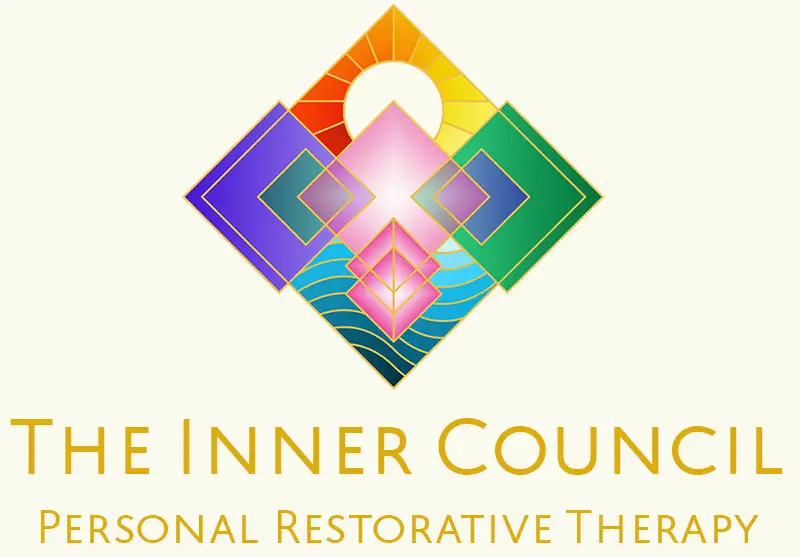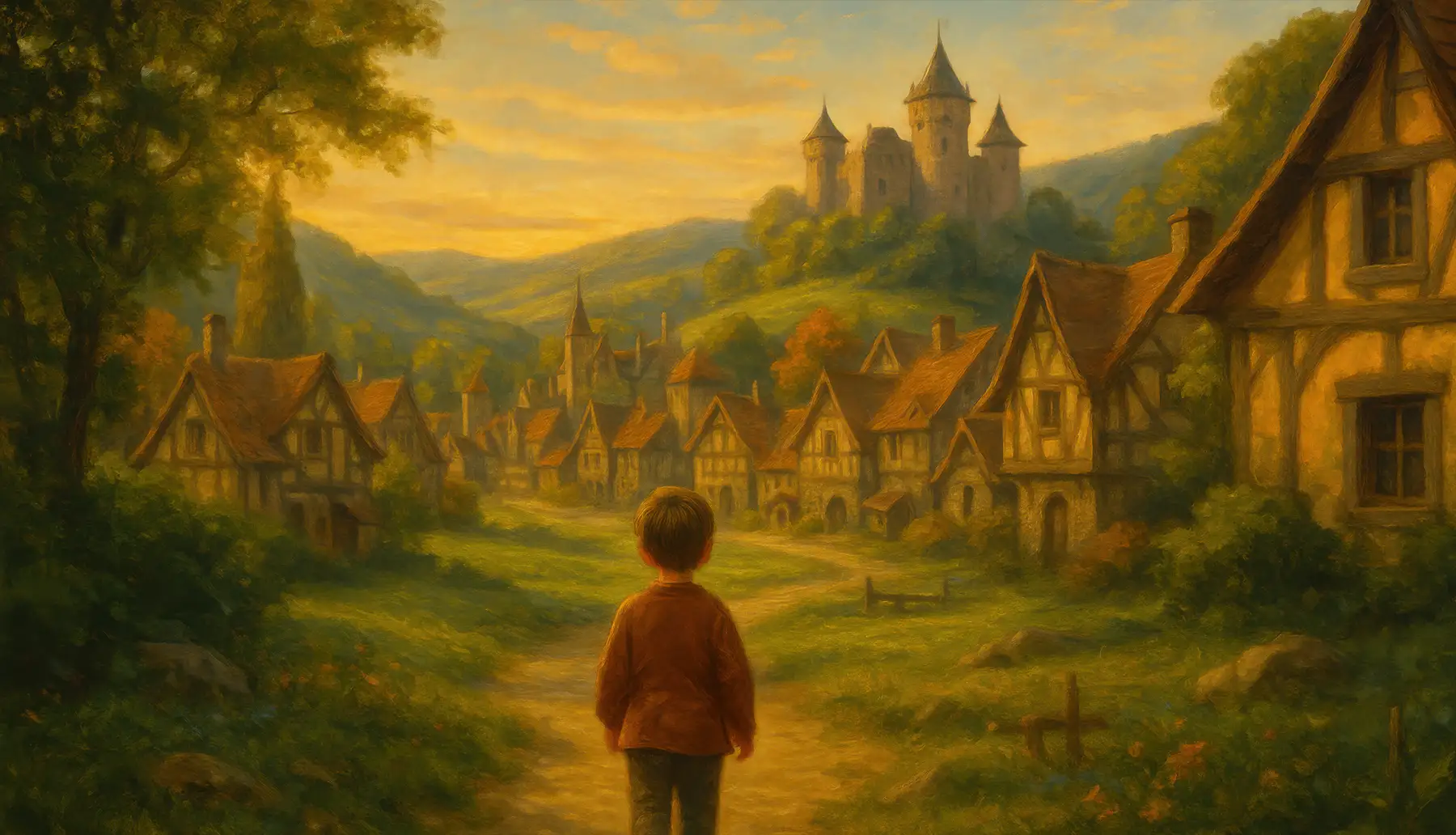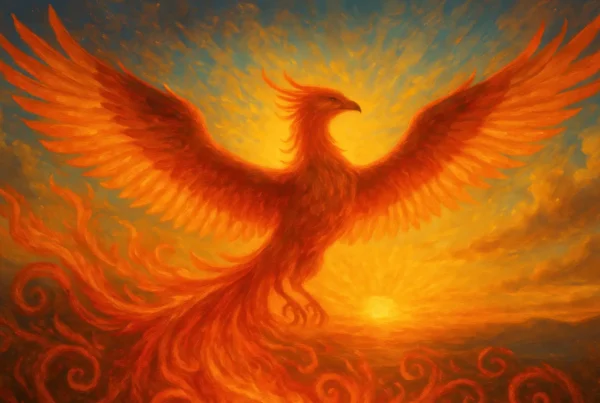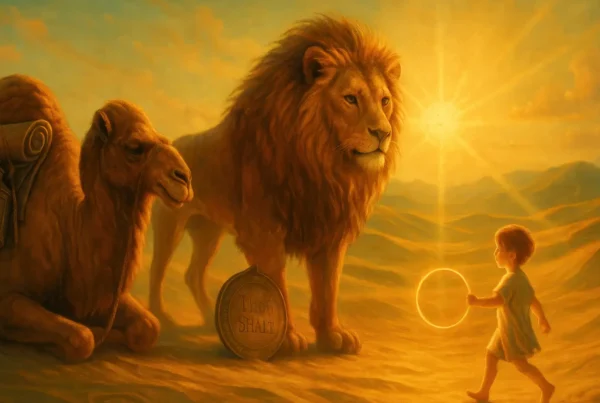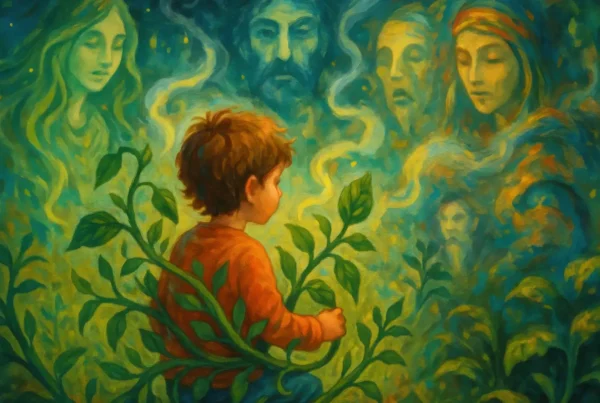BOOK YOUR WORKSHOP TODAY
All posts published here are presented as casual conversation pieces to provoke thought in some direction or another, they do not necessarily represent fixed opinions of the Inner Council, as our work exists beyond the spectrum of bound statement and singular clause.
Inner Village work is about archetypes, ancestral connection, and compassionate re-parenting, recovering inner safety and belonging in our lives.
Key Takeaways
- Indigenous cultures see children as sacred, intuitive beings already connected to spirit.
- Inner child healing restores the reverence, safety and belonging many of us lacked.
- The child carries both ancestral wounds and ancestral medicine for the lineage.
- Revillaging builds an inner community of Elders, Protectors, Nurturers and Guides.
- A restored inner village reorganises the nervous system and softens lifelong patterns.
- When the village returns, creativity, intuition and purpose naturally re-emerge.
Indigenous Childhood Experiences and the Inner Child
In many Indigenous cultures, the child is not seen as a blank slate to be shaped, but as a spiritual being arriving with memory, purpose, and a pre-existing relationship to the unseen world. Rather than assuming that a child must be filled, corrected, or domesticated, traditional societies often treat childhood as a sacred emergence of an already-intelligent soul. The community’s role is not to impose identity, but to welcome the child’s inherent gifts, personality, and destiny.
Across continents—from the Dagara of West Africa to the Cherokee, the Inuit, the Māori, and the Amazonian Tukano—childhood is understood as a period of heightened connection to spirit. Children are believed to be closer to the ancestors, still listening to inner voices, dreams, and natural psychic perception. Their sensitivity is not pathologized; it is protected and cultivated. Adults learn to speak gently, protect imagination, and encourage children to express their inner worlds through play, story, and ritual. A child who talks to invisible helpers or sees auras is not shamed—they are seen as remembering what adults have forgotten.
This worldview provides a powerful mirror for inner child healing. Many of the wounds we carry come from environments where our sensitivity, imagination, intuition, or needs were dismissed. The “inner child” is not childish—it is the part of us who remembers how to feel, imagine, connect, and trust. When we work with our inner child, we restore a relational field similar to those Indigenous cultures established around their young: a field of reverence, listening, protection, and belonging.
Indigenous childhood also reveals that healing is not meant to occur in isolation. Children grow inside a web of aunties, uncles, cousins, elders, and the land itself. Their nervous systems are shaped by shared holding. When we heal the inner child, we are rebuilding the inner village—the supportive inner community that should have been there all along. This is why reparenting feels incomplete when it is only one inner adult speaking to one inner child. The psyche responds more deeply when the “inner council” forms: multiple inner figures, including ancestors, guides, and future selves, become part of the child’s holding environment.
Traditional societies often initiate children gradually into purpose, identity, and responsibility, not through force, but through witnessing. Instead of “fixing” the child, they help the child remember who they are. Inner child work follows the same path: to heal is not to reshape the inner child, but to reunite with the gifts we abandoned—intuition, creativity, vulnerability, connection, and wonder.
Modern psychology describes trauma as “a rupture of belonging.” Indigenous cosmologies suggest the medicine: healing is the restoration of relationship—to self, community, nature, and spirit. When we approach inner child work with Indigenous wisdom in mind, we discover that we are not repairing a broken part of ourselves; we are re-entering a lineage of human childhood that honored sensitivity as sacred and imagination as a direct language of the soul.
Inner Child as Healer of the Ancestral Line
In most traditional societies, children are not passive beings waiting to grow into purpose, they arrive with purpose. They are considered bridges between worlds, with one foot still in the spirit realm and the other stepping into this life. Because of this, the child carries an unfiltered sensitivity to what the lineage has not resolved.
Modern psychology calls this inherited trauma or family systems dynamics. Indigenous cultures call it ancestral burden or unfinished story.
In inner child work, we often discover that the child inside us has been carrying:
- unspoken grief of the family,
- unresolved conflict between generations,
- secrets held in silence,
- the shame of those who could not speak,
- roles children were never meant to carry.
Yet here is the paradox:
The child who carries the wound also carries the medicine.
- The unprotected child grows into the adult who learns boundaries.
- The unseen child becomes the adult who gives voice to truth.
- The rejected child becomes the adult who learns unconditional love.
In the Dagara and many other Indigenous traditions, this transformation is not accidental, it is sacred design. A soul strong enough to carry a wound is also strong enough to release it.
Healing does not move backward through time, it moves through the present consciousness, where the child and the ancestors meet.
When we bring love, protection, and dignity to the inner child, several things happen:
- The lineage witnesses resolution.
The ancestors see that what they could not complete has finally been tended to. - The child returns what is not theirs.
Energetically, the burden goes back to the spirits who can handle it, not in anger, but in respect. - The ancestral field reorganizes.
Trauma that sat like a dense knot begins to untangle. - The gifts re-emerge.
Whatever was silenced, art, intuition, voice, power, joy returns.
The child becomes the healer not by acting like an adult, but by being loved as a child. When the child is allowed to rest, to be held, to be celebrated, the lineage softens. Ancestors who have been waiting finally exhale.
The inner child is not the weakest part of us, it is the doorway through which the ancestors come home.
The Inner Village: Rebuilding the Support the Child Never Had
In cultures where childhood is held within a community, the child does not grow in isolation. Caregivers, elders, siblings, cousins, teachers, storytellers, midwives, healers, and ancestors all participate in the shaping of a young soul. No single adult is expected to provide everything. The child is supported by a village, a network of nervous systems, perspectives, teachings, affection, and supervision.
When a modern child grows up without that network, physically, emotionally, or spiritually, the adult learns to carry the entire world alone. This creates loneliness, hyper-independence, self-reliance that hides exhaustion, and a quiet belief:
“If I don’t do it myself, no one will.”
Healing requires building the village that never existed.
The Village Within
Even if the original village was absent, the psyche can create an internal one. This is not fantasy, it is a psychological truth seen across Indigenous cosmologies, depth psychology, trauma work, and soul-retrieval traditions. The inner world already contains many helpers waiting to be awakened.
An inner village may include:
- The Inner Elder
The wise presence who speaks truth, protects boundaries, and knows what is safe. - The Inner Mother & Inner Father (or nurturing archetypes)
Not the biological parents, but the spiritual parents — patient, warm, unconditionally loving. - The Inner Warrior or Protector
The one who says “no,” who stands between the child and harm, who has strength without cruelty. - The Inner Teacher or Storyteller
The one who puts the child’s experience into meaning, myth, and understanding. - The Inner Healer
The gentle restorer of balance who teaches compassion toward the parts of ourselves that still ache. They bring patience, care, and renewal to the whole village, turning pain into wisdom and tenderness into strength. - The Inner Artist or Creator
The one who transforms emotion into expression and brings colour, play, and imagination to life. They remind the village that joy and creativity are sacred acts of healing. - Ancestors and Spirit Allies
Those who came before, who carry wisdom that was never passed down physically, and who remind us that we belong to something larger than ourselves.
Each role fills a psychological gap left in childhood. Where the outer world failed, the inner world can rebuild.
Reparenting vs. Revillaging
Many modern healing paths focus on reparenting, becoming the safe adult the child never had. This is powerful, but it puts all responsibility on one inner figure. A village distributes the weight.
The child can cry to the mother, learn from the elder, laugh with siblings, seek protection from the warrior, and hear guidance from the ancestors. No single figure becomes overwhelmed — and the inner child learns they do not have to rely on one source of love or safety. This mirrors the original human blueprint: many nervous systems supporting one small soul.
The Nervous System Remembers
When the village forms internally, something extraordinary happens:
The nervous system begins to reorganize.
- Hypervigilance softens because the protector finally arrived
- Shame dissolves because the inner mother never turns away
- Confusion becomes clarity because the elder is patient and wise
- Loneliness fades because the child is no longer alone
When the imagination aligns to spirit and tends toward a familiar pathway, energetic templates are renewed and inner balance is achieved through the nervous system. This is what we are calling grounded traditional wisdom. Attachment forms where attachment was missing. Safety becomes embodied. The child learns to let go of energy that has no place within the child as the heart of the community.
Rebuilding the Village in Daily Life
Once the inner village is created, the outer world begins to reflect it. Healthy friends arrive. Mentors appear. Boundaries strengthen. The adult stops choosing people who resemble the wound and chooses people who resemble the cure. The child, once abandoned, becomes cherished. Healing is not only recovering from what happened, it is building the world that every child deserved within the self.
How to Identify the Missing Pieces in Your Inner Village
Every child develops according to the support they receive. When support is missing, the adult inherits the absence. To rebuild the inner village, we first identify where the gaps live.
A simple way is to look at life through the eyes of the child within:
- Did someone protect you when you were frightened or overwhelmed?
If not, the Inner Protector is missing or underdeveloped. Without this figure, adults become anxious, boundary-less, or afraid to speak up. - Did someone delight in you, celebrate you, or show pride in who you were?
If not, the Inner Mother or Inner Father may carry silence, criticism, or absence. Adults grow into perfectionists or self-doubters who need external validation. - Did someone teach you, explain the world, help you make meaning?
If not, the Inner Teacher or Storyteller may be missing, and the adult struggles to understand their feelings or purpose. - Did someone guide you into your gifts, your creativity, your unique soul?
If not, the Inner Elder has been lost, and the adult feels directionless or spiritually disconnected. - Did you ever feel like you belonged?
If not, the entire village went missing, and the child learned to become their own village, alone.
These missing pieces are not failures of the psyche, they are invitations. The inner world is ready to be populated. The soul is prepared to remember what community feels like.
The child tells us what is needed: through triggers, emotional reactions, loneliness, exhaustion, or the longing for love and safety. These signals are not wounds, they are messages. They ask for help, and the village is the answer.
How Ancestors Participate in Revillaging
In many Indigenous cosmologies, a child is never born alone. They arrive with ancestors behind them, watching, guiding, whispering in dreams. Even if a lineage is ruptured by trauma, forgetting, or disconnection, the ancestors remain. When we rebuild the inner village, the ancestors often arrive spontaneously, through intuition, synchronicity, dreams, or meditation. They come to restore what was lost, return cultural memory or remind the soul of its purpose.
Ancestors often provide what a living family can not.
- If the biological mother could not nurture, a grandmother or ancient maternal spirit may step in.
- If the father was absent, an ancestral warrior may appear to teach strength and integrity.
- If there was no community, ancestors bring an entire lineage.
In revillaging, ancestors become Elders, Teachers, Protectors, Witnesses & Healers. They fill the missing seats around the fire.
In inner child meditation sessions people can feel “multiple presences” enter the room. The psyche here is responding relationally to the call of belonging. Spirit world and inner world collaborate. The ancestors understand what the child suffered, and because they exist beyond linear time, they heal both past and present at once. When one descendant heals, an entire lineage feels a lift of weight. The child once again receives the village and the ancestors return home through you.
Redistributing the Burden
Modern life places an impossible weight on the individual. When outer communal, familial, ecological, and spiritual systems collapse, the burden does not disappear—it shifts inward. Without a village around us, we try to become a village of one. The psyche attempts to bear sociocultural, emotional, and even cosmic burdens that were never meant to be carried alone.
In the Inner Village model, this is the root of much inner suffering. Instead of being supported by a web of relationships, elders, peers, guides, ancestors, and the larger living world, the modern psyche internalises everything. The Protector takes on the weight of the world. The Analyst tries to solve every problem. The Inner Child feels unsafe and alone. Even the Inner Elder, who should guide, becomes overwhelmed by an expectation of omniscience.
Traditional cultures understood something different: weight is meant to be distributed. Their cosmologies included animals, deities, spirits, ancestors, and elemental forces who quite literally “held” aspects of life. The environment itself participated in the work of carrying. Humans were responsible, but not responsible for everything.
- The Inner Village invites us back into this worldview.
- No inner role is meant to bear the full burden.
- The Child carries innocence, not the world.
- The Protector holds vigilance, not the entire cosmos.
- The Elder offers wisdom, not omnipotence.
- The Dreamer carries possibility, not destiny.
- The Body carries sensation, not existential weight.
Healing comes from redistributing responsibilities across the Village and reclaiming the larger systems, cosmic, ecological, ancestral, that also hold us. We remember that we, too, belong to a web of support. We are not the center of the cosmos. We are not here to save the world through personal effort. We are here to participate rightly in the pattern.
Modern individualism has left many of us carrying the mythic burden of salvation, a weight that strains the psyche and fractures the inner community. The Inner Village teaches another way: the world is not carried alone. Support is built into the structure of life itself. Our task is not to bear everything, it is to reconnect with the networks, inner and outer, that were always meant to help.
What Changes When the Inner Village Is Restored
When a traditional village is functioning, no child is alone. Every child has many parents, many teachers, many protectors. Food is shared, danger is held collectively, and purpose is nurtured rather than demanded. When we rebuild this village internally, the psyche reorganizes itself in profound ways.
First, safety returns.
A nervous system that has been in survival mode finally receives the message: “You are not alone anymore.” The body softens. Breath deepens. Emotional flashbacks lessen. The inner child no longer has to guard the door; the village stands watch.
Second, the burden of identity lightens.
Many people live as if every failure or conflict proves something about their worth. When the inner village is restored, mistakes become learning — not punishment. The child does not have to be perfect to be loved.
Third, creativity and intuition come back online.
Children are naturally creative. They sing, imagine, build, destroy, rebuild — without shame. When the child feels protected, creativity returns spontaneously. Some people begin drawing, dancing, gardening, writing, or speaking truths that were silent for decades.
Fourth, relationships shift.
When the inner child is no longer abandoned, we stop asking partners, friends, bosses, or children to fill that vacuum. Love becomes freer, less desperate, more honest. Boundaries arise not from fear, but from dignity.
Fifth, ancestral healing accelerates.
When one child in the lineage receives protection and belonging, the entire ancestral field begins to reorganize. Patterns loosen. Dreams become clearer. Some people report that conflicts in family lines ease, or previously stuck dynamics suddenly soften.
And finally, purpose emerges.
Every lineage carries gifts — healing, leadership, art, communication, resilience, intuition, medicine, storytelling. When the inner village is restored, these gifts rise to the surface. The child steps forward not as a wounded ghost, but as the guide of a new direction.
A restored inner village means:
- The body relaxes.
- The heart trusts.
- The ancestors exhale.
- The soul remembers why it came.
Rebuilding the Inner Village through Inner Child work reveals how we can restore the emotional support systems we lacked in childhood. Through archetypes, ancestral connection, and compassionate re-parenting, we learn to create inner safety, belonging, and guidance for every stage of our lives.
The Inner Village concept was much inspired by the heartfelt sense of coming home to a functional village community, and by the works and wisdom of Indigenous elders, please see our article on The Inner Child in Traditional Community Wisdom.
